This guide is designed to assist student nurses and nurses alike in developing a comprehensive nursing care plan and implementing appropriate interventions for clients at risk for bleeding or those with hemophilia. Gain a thorough understanding of the nursing assessment, diagnosis, and interventions required to effectively manage risk for bleeding.
When disease or the outcome of disease treatments confuse the standard mechanisms that maintain hemostasis, a client may be at risk for bleeding. Certain diseases like hemophilia interfere with the genetic expression of normal clotting factors. Risk for bleeding happens with disorders that reduce the quality or quantity of circulating platelets (thrombocytopenia). A reduction in the production of platelets from the bone marrow is linked to cancers of the blood and blood-forming organs. Increased destruction of platelets is linked to immune thrombocytopenic purpura (ITP). Reduction in the synthesis of clotting factors is due to liver impairment.
Hereditary bleeding disorders occur due to the absence or deficiency of specific clotting proteins. The three most common hereditary bleeding disorders are hemophilia A (factor VIII deficiency), hemophilia B (factor IX deficiency), and von Willebrand disease.
Bleeding can be internal or external. External bleeding occurs when it comes from a body orifice or a traumatic wound. Internal bleeding involves a high level of clinical suspicion gained from a thorough history and physical, laboratory tests, imaging, and close monitoring of vital signs (Gowda, 2023).
Risk Factors
Bleeding risk may arise in any condition that disturbs the “close circuit” integrity of the circulatory system. Examples of these conditions include:
- Conditions that disrupt the integrity of the circulatory system‘s “close circuit” can increase bleeding risk, such as:
- Traumatic injury.
- Major organ surgery.
- Inflammatory and ulcerative disorders of the gastrointestinal system, including inflammatory bowel disease and peptic ulcer disease.
- Certain drugs can suppress bone marrow function, elevating the risk of bleeding, including:
- Anticoagulants.
- Nonsteroidal anti-inflammatory drugs (NSAIDs).
- Cancer chemotherapy agents.
- Anticoagulant therapy’s primary complication is bleeding, which is a risk with all anticoagulants, even when levels are within normal therapeutic ranges.
- Herbal remedies may cause bleeding issues by directly affecting clotting factors or by interacting with anticoagulants.
Nursing Care Plans and Management
Nursing care plans for risk for bleeding are meticulously created to outline individualized interventions aimed at preventing, minimizing, or managing the potential for bleeding episodes. A thorough assessment of the client’s medical history, current condition, and potential risk factors that may contribute to bleeding susceptibility is performed to accurately ascertain the client’s bleeding risk. Nursing interventions are carefully selected and prioritized to address risk factors effectively. Regular reassessment and adjustment of the care plan are integral components of nursing practice, allowing for ongoing evaluation of the client’s response to interventions and adaptation to changing clinical circumstances.
Nursing Problem Priorities
The following are the nursing priorities for clients with bleeding risk or hemophilia:
- Preventing bleeding-related injuries. These injuries are directly related to the potential harm the client may experience due to bleeding. Nursing interventions may include implementing bleeding precautions and ensuring a safe environment to prevent falls and injuries.
- Promoting good skin integrity. The integrity of the skin becomes paramount to prevent wounds that may lead to bleeding complications. Nursing interventions may include regular skin assessments, appropriate skin care measures, and the use of pressure-relieving devices if the client is immobile.
- Preventing fluid volume deficit. Bleeding episodes can lead to fluid loss, potentially resulting in hypovolemia and other complications. Nursing interventions may include monitoring fluid intake and output and assessing for signs of hypovolemia or dehydration.
Nursing Assessment
Assessment is necessary to identify potential problems that may have led to bleeding and also name any event that may occur during nursing care.
- Tachycardia
- Tachypnea
- Hypotension
- Orthostasis
- Mucosal or gingival bleeding
- Easy bruising
- Hematoma
- Petechiae
- Hemarthrosis (bleeding into joints)
- Tenderness
- Decreased range of motion
- Altered mental status
- Hepatic or splenic tenderness
Nursing Diagnosis
Identifying a nursing diagnosis involves a comprehensive assessment of the client’s medical history, current condition, and potential risk factors that predispose the client to bleeding complications. The client’s laboratory test results need to be analyzed, as abnormalities in these parameters may indicate an increased risk of bleeding. Reviewing the client’s existing medications, as well as recent surgical procedures or medical interventions, can also help identify if these predispose the client to bleeding.
- Risk for bleeding as evidenced by impaired coagulation (e.g., hemophilia, anemia)
- Risk for bleeding as evidenced by invasive procedures (e.g., secondary to surgery)
- Risk for bleeding as evidenced by anticoagulant use
- Risk for bleeding as evidenced by decreased platelet function
Nursing Goals
Goals and expected outcomes may include:
- The client will demonstrate measures to prevent bleeding and recognize signs of bleeding that need to be reported immediately to a healthcare professional.
- The client will not experience bleeding as evidenced by normal blood pressure, stable hematocrit, hemoglobin levels, and desired ranges for coagulation profiles.
Nursing Interventions and Actions
Therapeutic interventions and nursing actions for clients with a risk for bleeding or hemophilia may include:
1. Assessing the Risk for Bleeding
Healthcare professionals, as well as clients, would benefit from identifying the risk of bleeding. From the client’s perspective, it would be incredibly helpful to know their risk of bleeding and how this might change modifying potential risk factors. This allows the client to change their risk by avoiding high-risk activities (Gemini, 2023).
Determine the client’s health history for signs that can be associated with a risk for bleeding such as liver disease, inflammatory bowel disease, or peptic ulcer disease.
Early identification of possible risks for bleeding provides a foundation for implementing appropriate preventive measures. Gastrointestinal bleeding may be difficult to identify without further imaging or procedure, but a good history is essential, and a thorough physical exam can lead to clues as to the source of bleeding.
Monitor the client’s vital signs, especially blood pressure (BP) and heart rate (HR). Look for signs of orthostatic hypotension.
Hypotension and tachycardia are initial compensatory mechanisms usually noted with bleeding. Orthostasis (a decrease of 20 mm Hg in systolic BP or 10 mm Hg in diastolic BP when changing from a supine to a sitting position) indicates reduced circulating fluids.
Evaluate the client’s use of any medications that can affect hemostasis (e.g., anticoagulants, salicylates, NSAIDs, or cancer chemotherapy).
Drugs that interfere with clotting mechanisms or platelet activity increase the risk of bleeding. Salicylates and other NSAIDs inhibit cyclooxygenase 1 (COX)-1, an enzyme that promotes platelet aggregation. Warfarin, an oral anticoagulant, inhibits the synthesis of vitamin K in the liver, thus reducing levels of several subsequent clotting factors. Heparin, a parenteral anticoagulant, inhibits the action of thrombin and prevents the formation of a fibrin clot. Many drugs used to treat cancer suppress bone marrow function and therefore the production of platelets.
Review laboratory results for coagulation status as appropriate: platelet count, prothrombin time/international normalized ratio (PT/INR), activated partial thromboplastin time (aPTT), fibrinogen, bleeding time, fibrin degradation products, vitamin K, activated coagulation time (ACT).
The blood clotting cascade is an integral system requiring intrinsic and extrinsic factors. Derangements in any factor can affect clotting ability. These laboratory tests provide important information about the client’s coagulation status and bleeding potential. The specific laboratory values to be monitored will depend on the client’s specific clinical condition. For clients receiving anticoagulants, increased levels of PT/INR and aPTT above therapeutic values are associated with an increased risk for bleeding. Reduced platelet counts may develop in clients receiving heparin therapy.
Check stool (guaiac) and urine (Hemastix) for occult blood.
These tests are used to distinguish bleeding from the gastrointestinal or urinary tracts that may not be visible. The passage of maroon stools or bright red blood from the rectum is usually indicative of massive lower gastrointestinal hemorrhage. Stools streaked with blood and blood drops on the toilet paper or in the toilet bowl may be associated with perianal pathology (Cagir & Anand, 2019).
Assess skin and mucous membranes for signs of petechiae, bruising, hematoma formation, or oozing of blood.
Clients with reduced platelet counts or impaired clotting factor activity may experience bleeding into tissues that are out of proportion to the injury. Prolonged oozing of blood from surgical incisions or areas of skin trauma is associated with coagulation abnormalities. Petechiae are pinpoint hemorrhages and ecchymoses are larger hemorrhages. The purpura is not palpable, in contrast to the palpable and sometimes tender purpura observed in clients with vasculitis (Thiagarajan & Nagalla, 2023).
Monitor for skin necrosis, changes in blue or purple mottling of feet that blanch with pressure or fade when legs are elevated.
Clients on anticoagulant therapy remain at risk of developing emboli. Hemorrhagic complications are the most common adverse effects of anticoagulant therapy. Anticoagulation therapy for three to six months results in major bleeding complications in 3 to 10% of clients (Patel & Chun, 2019).
Assess the female client’s menstrual history.
Metromenorrhagia is often observed in women with primary hemostatic disorders. This is especially common in those with von Willebrand disease and is often exacerbated by the NSAIDs used to treat dysmenorrhea. Bleeding after childbirth may be the first sign of a mild bleeding disorder.
Determine the client’s dental history of bleeding.
Bleeding gums are a common sign of a client with a primary disorder of hemostasis. The bleeding could be spontaneous or it could be associated with brushing or flossing. Ask after bleeding from tooth extractions. A molar tooth extraction is a traumatic procedure and may likely cause heavy bleeding in a client with a severe bleeding disorder.
Examine an existing non healing wound, if present.
Defective wound healing is usually present in clients diagnosed with factor XIII deficiency and abnormal fibrinogens. Factor XIII catalyzes the final step in the coagulation cascade, helping wound healing and resisting fibrinolysis (Hartung & Tebbi, 2021).
Review diagnostic test results and imaging studies.
For a bleed in the skull, a prompt, non-contrast CT scan is necessary within six hours of onset for the best outcomes. For bleeding in the chest, diagnosis is aided using a chest X-ray, ultrasound, or CT scan. A fluid analysis will definitively diagnose the presence of blood from other forms of fluid.
Utilize bleeding assessment tools, if available.
Structured bleeding assessment tools (BATs) such as from the International Society on Thrombosis and Haemostasis (ISTH-BAT) may be utilized as a screening instrument in specific clients and implemented in the diagnostic evaluation. The ISTH-BAT records both the presence and the severity of bleeding at 14 important sites.
2. Preventing the Risk of Injury
In the past, high-impact sports were usually prohibited in clients with bleeding disorders due to a high risk of bleeding injuries. Today, participation in physical activities has improved and is considered healthy for these clients. Different guidelines are available to regulate a client’s participation in physical activities (Moretti et al., 2021).
Assist the client in wearing elastic compression stockings.
Older adults and clients with recurrent ipsilateral deep vein thrombosis (DVT) have the highest risk for postthrombotic syndrome (PTS). Below-the-knee compression stockings (ECS) assist the calf muscle pump and reduce venous hypertension and venous valvular reflux. This reduces leg edema, aids the microcirculation, and prevents venous ischemia.
Provide conservative measures for minor bleeding episodes.
Minor bleeding from cuts and abrasions may respond to pressure and ice. The most common sites of clinically significant bleeding are joint spaces. Immobilization of the affected limb and the application of ice packs help diminish swelling and pain.
Avoid aspiration of hemarthrosis.
Hematomas or joints should not be aspirated and bleeding sites should not be cauterized unless indicated, as these procedures may aggravate the bleeding. Hemarthroses should not be aspirated unless they are severe and involve significant pain and synovial tension. Some hemarthrosis may pose particular problems because they interfere with the blood supply.
Inject routine immunizations through the deep subcutaneous tissue.
Routine immunizations that require injection, such as diphtheria, tetanus toxoids, and pertussis, may be given using a deep subcutaneous injection with a fin-gauge needle. Administer the hepatitis B vaccine soon after birth to all infants with hemophilia.
Avoid circumcision of male infants born to mothers who are carriers of hemophilia.
Newborn boys with severe hemophilia may present with prolonged bleeding at circumcision. Approximately 30 to 50% of clients with severe hemophilia present with manifestations of neonatal bleeding after circumcision.
Provide prophylactic treatment for clients with hemophilia, as indicated.
The main goal of prophylactic treatment is to prevent bleeding symptoms and organ damage, in particular to joints. The FDA approved a long-acting recombinant FVIII-Fc fusion protein product for the control of bleeding episodes, management of perioperative bleeding, and routine prophylaxis in clients with hemophilia.
Administer pain relief medications as prescribed.
Acute bleeding in joints and soft tissues can be extremely painful, therefore, it requires immediate analgesic relief. Nonsteroidal anti-inflammatory drugs can be effective in managing acute and chronic arthritic pain but significant caution must be used in dose and frequency due to concerns for increased risk of bleeding.
Encourage childbearing women to participate in carrier testing, if applicable.
Carrier testing is valuable for women who are related to obligate carrier females or males with hemophilia. Carrier testing may prevent the births of clients with major hemophilia. This testing can be offered to women interested in childbearing who have a family history of hemophilia.
Instruct the client to avoid high-impact sports. Encourage appropriate physical activities.
Clients diagnosed with severe bleeding disorders should avoid high-impact contact sports and other activities with a significant risk of trauma. Mounting evidence suggests that appropriate physical activity improves overall conditioning, reduces injury rate and severity, and improves psychosocial functioning. A study reported that aerobic exercise on a stationary cycle resulted in significant improvement in hemostatic indices in clients with mild to moderate hemophilia.
3. Promoting Skin Integrity
The skin is the largest organ in the human body and plays a crucial role in different processes such as hydration, protection from chemicals and pathogens, and thermal regulation. Severe skin damage can therefore be life-threatening (Tottoli et al., 2020). The first step in wound healing is “hemostasis”, which is the body’s natural and instant physiological response to “halt the blood”. This plays a vital role in preventing the loss of blood that occurs due to a disruption of the vessel walls, be it microscopic or macroscopic (Malik et al., 2021).
Ensure that the client’s skin is not in prolonged contact with urine or feces.
Hyperhydration increases skin permeability. Fluids can penetrate the intercellular spaces of the epidermis and increase its thickness five-fold, weakening the skin’s barrier function. Regularly change incontinence pads for immobile clients or diaper changes in infants (Dissemond et al., 2021).
Instruct the client to avoid using rough or non-abrasive materials (towels, sheets, etc.).
Rough or abrasive materials can cause friction and trauma to the skin, especially in clients with fragile or compromised skin due to conditions such as thrombocytopenia and coagulopathy. Skin injuries caused by rough materials may also take longer to heal in clients with a bleeding risk.
Encourage the use of mild skin cleansers.
Exposed skin and lesions should be cleaned gently with hypoallergenic, non-irritating products. Any products containing preservatives, quinoline, PVP iodine, or natural ingredients such as tea tree oil should be avoided. Alkaline soaps or anionic tensides are not recommended.
Provide skin care products with protective effects.
Skin care products can help to improve or restore the skin’s barrier function. Natural ingredients such as tea tree oil or marigold extracts should be avoided since they may cause contact sensitization. Emulsifiers, preservatives, and fragrances are also possible causes of contact sensitization. Powders should also be avoided.
Avoid unnecessary or repeated skin cleansing.
Water for cleansing must be used only sparingly, since it may further damage an already damaged skin. If water is used, it needs to be tepid. The skin may also be cleansed with products that do not need to be rinsed. Special pre-moistened cleansing wipes or disposable cleansing systems are recommended, especially ‘no-rinse’ products that can be used without added water.
Ensure that the skin, especially skin folds, is appropriately dried especially after a bath.
After cleansing, the skin must be gently dried but never rubbed or blow-dried. Moisture in skin folds can exacerbate friction between the skin surfaces, leading to chafing and irritation. Excessive moisture can also weaken the skin barrier, making it more susceptible to damage.
4. Preventing Fluid Volume Deficit and Excessive Bleeding
Hypovolemic shock is due to a critical loss in the effective circulating blood volume with systemic hypoperfusion. It may be due to a loss in total body fluids versus bleeding. Early recognition and treatment with volume resuscitation to restore euvolemia are life-saving (Taghavi et al., 2023).
Immobilize the affected limb.
The most common sites of clinically significant bleeding are joint spaces. Weight-bearing joints in the lower extremities are often target areas for recurrent bleeding. Immobilization of the affected limb can help diminish swelling and pain.
Apply direct pressure to an external bleeding site.
The first technique employed in bleeding control should be direct pressure. Pressure should be applied to the external bleeding site until it stops, ideally sustained, on a firm surface, with or without a dressing.
When using a tourniquet for direct pressure, ensure that it is applied appropriately.
Tourniquets have proven to be effective in achieving temporary control of bleeding, with low complication rates. There are five points to consider in the prehospital application of a tourniquet. The tourniquet must be placed a minimum of five centimeters from the proximal edge of the wound. Increase tourniquet pressure until the bleeding stops. The moment of tourniquet placement must be timed. It must be kept visible at all times and should not be removed until hospital admission (Lugo et al., 2020).
Pack a bleeding wound if direct pressure is not possible.
If despite direct pressure on the wound, bleeding does not stop, or if direct pressure is difficult to perform, packing of the wound should be done. This is achieved by inserting a clean cloth or dressing from the deepest to the most superficial part against resistance, filling the wound. However, this should not replace direct pressure.
Administer FVIII for clients with hemophilia.
Acute joint bleeding and expanding large hematomas require adequate factor replacement for a prolonged period until the bleeding begins to resolve. Life-threatening bleeding episodes are generally initially treated with FVIII levels of approximately 100%.
For bleeding linked with excessive anticoagulant use, give appropriate antidotes as prescribed.
Protamine sulfate reverses the effect of heparin. Vitamin K will counteract the action of warfarin. Specific treatment depends on the severity of the bleeding and the anticoagulant. Idarucizumab is approved for reversal of the direct thrombin inhibitor dabigatran, and andexanet alfa is approved for reversal of the direct thrombin inhibitor apixaban and rivaroxaban (White et al., 2022).
Administer prophylactic medications as prescribed.
Clients can be treated with prophylaxis or with intermittent, on-demand therapy for bleeding events. Prophylaxis has been shown in many studies to prevent or at least reduce the progression of damage to target sites, such as joints. This requires the administration of FVIII three times per week.
Assist in gene therapy, as indicated.
The FDA approved the first gene therapy for hemophilia A in June 2023. It is a one-time, single-dose IV adeno-associated virus vector-based gene therapy indicated for severe hemophilia A. Preclinical studies resulted in long-term correction of the bleeding disorders and, in some cases, a permanent cure.
5. Providing Client Education about Bleeding Precautions
Self-management or the ability of a client to undertake daily management of their health and healthcare is essential in clients with a high risk of bleeding or bleeding disorders. These clients must be competent in controlling bleeding symptoms to preserve their health, joint integrity, and functional independence (Srivastava et al., 2020).
Use a soft-bristled toothbrush and nonabrasive toothpaste. Avoid the use of toothpicks and dental floss.
This method of oral hygiene reduces trauma to oral mucous membranes and the risk of bleeding from the gums. Soft-bristled toothbrushes are gentler on the gums compared to medium or hard-bristle brushes. Dental floss used with excessive force or in tight spaces can injure the gums and cause bleeding.
Avoid rectal suppositories, thermometers, enemas, vaginal douches, and tampons.
These invasive devices or medications may cause trauma to the mucous membranes that line the rectum or vagina, particularly if the client has underlying conditions that make their tissues more fragile or prone to bleeding, such as hemorrhoids, anal fissures, or vaginal infections
Limit straining with bowel movements, forceful nose blowing, coughing, or sneezing.
These activities may cause trauma to the mucosal linings in the rectum, nasal passages, or upper airways. These all generate increased intra-abdominal or intranasal pressure. This elevated pressure can exacerbate existing bleeding or trigger new bleeding episodes.
Be careful when using sharp objects like scissors and knives. Use an electric razor for shaving (not razor blades).
The client needs to avoid situations that may cause tissue trauma and increase the risk of bleeding. Electric razors typically have rounded blades that move in a circular motion, reducing the risk of cuts and nicks compared to traditional manual razors with sharp blades.
Educate the client and family members about signs of bleeding that need to be reported to a healthcare provider.
Early evaluation and treatment of bleeding by a healthcare provider reduce the risk of complications from blood loss. Client and family education about early recognition of hemorrhage signs and symptoms is important for instituting or increasing the intensity of replacement therapy.
Allow the client to use normal saline nasal sprays and emollient lip balms.
These treatments reduce the drying and cracking of mucous membranes and therefore reduce the risk of bleeding. These products provide gentle moisturization because they contain mild, non-irritating ingredients that are less likely to cause irritation or inflammation.
Explain to a sexually active client the use of water-soluble lubricants during intercourse.
Lubricants are used to reduce friction and tissue trauma that increase the risk of bleeding. Friction during intercourse can potentially lead to abrasions or even tearing, increasing the risk of bleeding. Water-soluble lubricants, especially, are gentle on the skin and mucous membranes, minimizing the risk of trauma or injury during intercourse.
Teach the client about measures to reduce constipation such as increased fluid intake and dietary fiber.
Hard and dry feces may cause trauma to the mucous membranes of the colon and rectum. Increasing fluid intake and dietary fiber soften the fecal mass for easier defecation.
Inform the client to check the color and consistency of stools.
Bright red blood in the stools is an indicator of lower gastrointestinal bleeding. A stool that has a dark greenish-black color and a tarry consistency is linked with upper gastrointestinal bleeding.
Educate the female client to inform the health care provider when there is an increase in menstrual bleeding as indicated by an increase in the number of sanitary pads used.
Alterations in coagulation may lead to increased blood loss with regular menstruation. An increase in menstrual bleeding may be characterized by a prolonged duration of the menstrual period compared to usual. The client may also need to change their pads or tampons more frequently than usual due to heavier bleeding.
Educate the client about over-the-counter drugs and avoid products that contain aspirin or NSAIDs such as ibuprofen and naproxen.
These drugs not only decrease normal platelet aggregation but also decrease the integrity of gastric mucosa through the inhibition of cyclooxygenase (COX)-1 inhibitor and therefore increase the risk for gastrointestinal bleeding.
Educate the client and family members about limiting the use of herbal remedies that are linked with an increased risk for bleeding like Dong Quai, feverfew, ginger, Ginkgo Biloba, and chamomile.
Most herbal preparations interfere with platelet aggregation through the inhibition of serotonin release from the platelet. Other herbs increase the effect of antiplatelet and anticoagulant medications, thus increasing the risk of bleeding.
Encourage the family members to be active in decision-making about the treatment of the client at risk for bleeding.
Active participation encourages a fuller understanding of the rationale and compliance with the treatment. Educating clients and family members about factor replacement administration at home has greatly enhanced the quality of life of clients with severe hemophilia by allowing prompt infusion for bleeds and markedly reducing the need for emergency department visits.
Recommended Resources
Recommended nursing diagnosis and nursing care plan books and resources.
Disclosure: Included below are affiliate links from Amazon at no additional cost from you. We may earn a small commission from your purchase. For more information, check out our privacy policy.
Ackley and Ladwig’s Nursing Diagnosis Handbook: An Evidence-Based Guide to Planning Care
We love this book because of its evidence-based approach to nursing interventions. This care plan handbook uses an easy, three-step system to guide you through client assessment, nursing diagnosis, and care planning. Includes step-by-step instructions showing how to implement care and evaluate outcomes, and help you build skills in diagnostic reasoning and critical thinking.

Nursing Care Plans – Nursing Diagnosis & Intervention (10th Edition)
Includes over two hundred care plans that reflect the most recent evidence-based guidelines. New to this edition are ICNP diagnoses, care plans on LGBTQ health issues, and on electrolytes and acid-base balance.

Nurse’s Pocket Guide: Diagnoses, Prioritized Interventions, and Rationales
Quick-reference tool includes all you need to identify the correct diagnoses for efficient patient care planning. The sixteenth edition includes the most recent nursing diagnoses and interventions and an alphabetized listing of nursing diagnoses covering more than 400 disorders.

Nursing Diagnosis Manual: Planning, Individualizing, and Documenting Client Care
Identify interventions to plan, individualize, and document care for more than 800 diseases and disorders. Only in the Nursing Diagnosis Manual will you find for each diagnosis subjectively and objectively – sample clinical applications, prioritized action/interventions with rationales – a documentation section, and much more!

All-in-One Nursing Care Planning Resource – E-Book: Medical-Surgical, Pediatric, Maternity, and Psychiatric-Mental Health
Includes over 100 care plans for medical-surgical, maternity/OB, pediatrics, and psychiatric and mental health. Interprofessional “patient problems” focus familiarizes you with how to speak to patients.

See also
Other recommended site resources for this nursing care plan:
- Nursing Care Plans (NCP): Ultimate Guide and Database MUST READ!
Over 150+ nursing care plans for different diseases and conditions. Includes our easy-to-follow guide on how to create nursing care plans from scratch. - Nursing Diagnosis Guide and List: All You Need to Know to Master Diagnosing
Our comprehensive guide on how to create and write diagnostic labels. Includes detailed nursing care plan guides for common nursing diagnostic labels.
References
- Cagir, B., & Anand, B. (2019, July 26). Lower Gastrointestinal Bleeding Clinical Presentation: History, Physical Examination. Medscape Reference.
- Dissemond, J., Assenhemier, B., Gerber, V., Hintner, M., Puntigam, M. J., Kolbig, N., Koller, S., Läuchli, S., Probst, S., Protz, K., Steiniger, A., Strohal, R., Traber, J., & Kottner, J. (2021). Moisture-associated skin damage (MASD): A best practice recommendation from Wund-D.A.CH. Journal der Deutschen Dermatologischen Gesellschaft, 19(6).
- Doherty, T. M., & Kelley, A. (2023). Bleeding Disorders – StatPearls. NCBI.
- Gemini, F. (2023). Prediction of the Risk of Bleeding in People Living with Hemophilia. McMaster University- Health Research Methods, Evidence, and Impact.
- Gowda, S. (2023). Hemorrhage – StatPearls. NCBI.
- Hartung, H. D., & Tebbi, C. K. (2021, June 28). Pediatric Factor XIII Deficiency: Practice Essentials, Pathophysiology, Epidemiology. Medscape Reference.
- Lugo, J. J. M., Caicedo, Y., Rodriguez, M. G., Serna, J. J., Ordoñez, J., Angamarca, E., Garcia, A., Pino, L. F., Quintero, L., Parra, M. W., & Ordoñez, C. A. (2020). Prehospital Damage Control: The Management of Volume, Temperature… and Bleeding! Colombia Medica, 51(4).
- Malik, A., Rehman, F. U., Shah, K. U., & Naz, S. S. (2021). Hemostatic strategies for uncontrolled bleeding: A comprehensive update. Journal of Biomedical Materials Research Part B: Applied Biomaterials, 109(10).
- Moretti, L., Bizzoca, D., Buono, C., Ladogana, T., Albano, F., & Moretti, B. (2021). Sports and Children with Hemophilia: Current Trends. Children, 8(11).
- Patel, K., & Chun, L. J. (2019, June 5). Deep Venous Thrombosis (DVT) Treatment & Management: Approach Considerations, General Principles of Anticoagulation, Heparin Use in Deep Venous Thrombosis. Medscape Reference.
- Srivastava, A., Santagostino, E., Dougall, A., Kitchen, S., Sutherland, M., Pipe, S. W., Carcao, M., Mahlangu, J., Ragni, M. V., Windyga, J., Llinás, A., Goddard, N. J., Mohan, R., Poonnoose, P. M., Feldman, B. M., Lewis, S. Z., van den Berg, H. M., & Pierce, G. F. (2020). WFH Guidelines for the Management of Hemophilia, 3rd edition. Haemophilia, 26(6).
- Taghavi, S., Nassar, A. K., & Askari, R. (2023). Hypovolemic Shock – StatPearls. NCBI.
- Thiagarajan, P., & Nagalla, S. (2023, November 20). Platelet Disorders: Overview of Platelet Disorders, Pathophysiology of Platelet Disorders, Autoimmune Thrombocytopenias. Medscape Reference.
- Tottoli, E. M., Dorati, R., Genta, I., Chiesa, E., Pisani, S., & Conti, B. (2020). Skin Wound Healing Process and New Emerging Technologies for Skin Wound Care and Regeneration. Pharmaceutics, 12(8).
- White, K., Faruqi, U., & Cohen, A. T. (2022). New agents for DOAC reversal: a practical management review. The British Journal of Cardiology, 29(1).
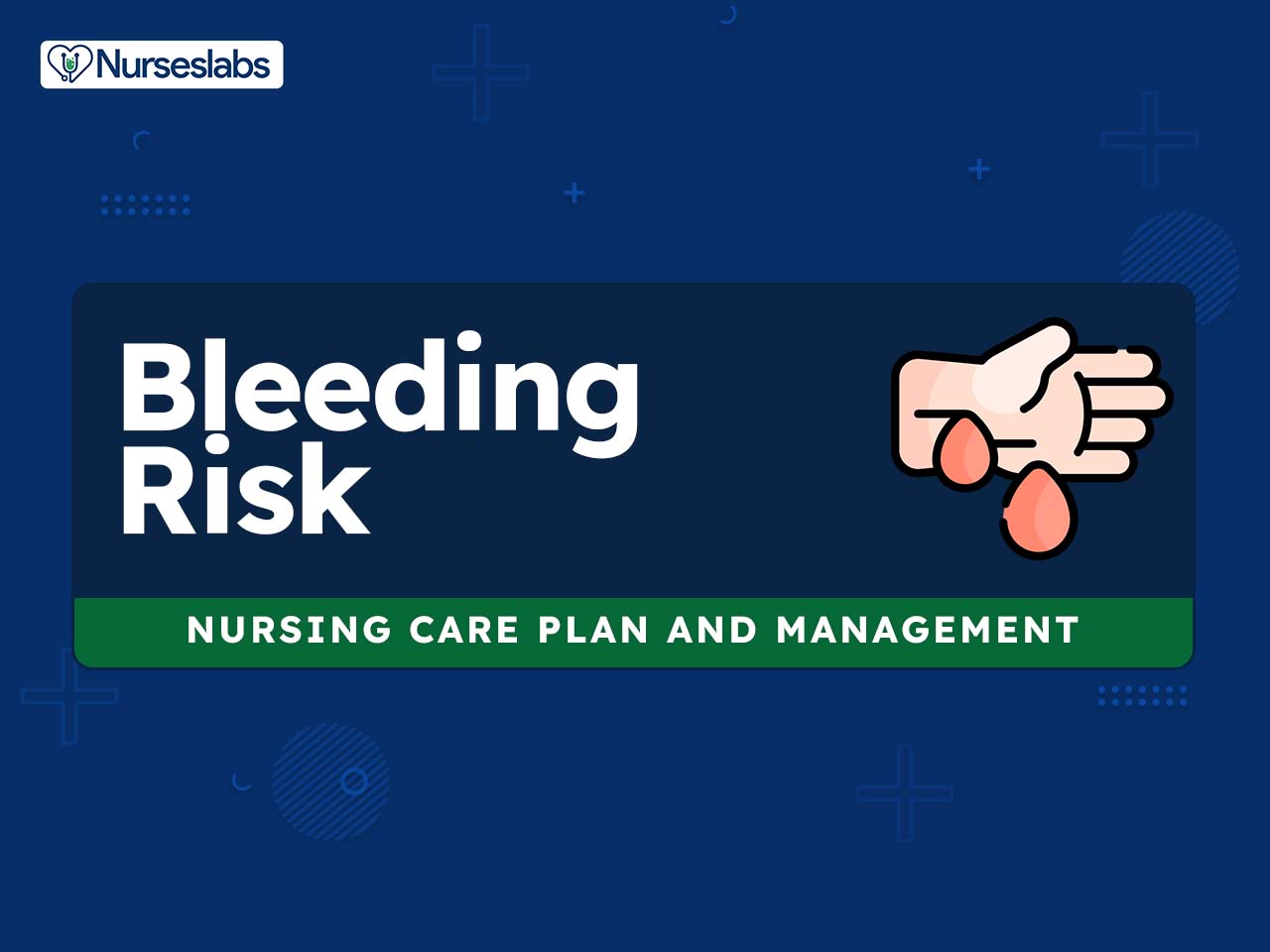














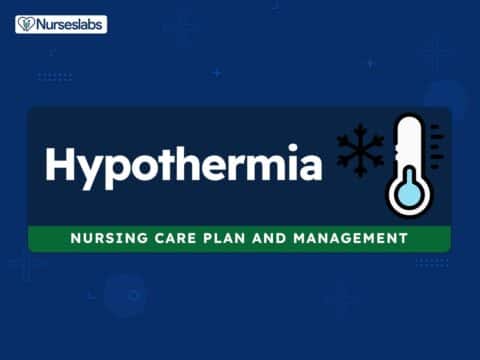
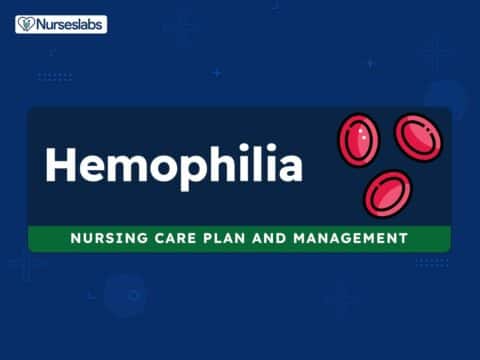




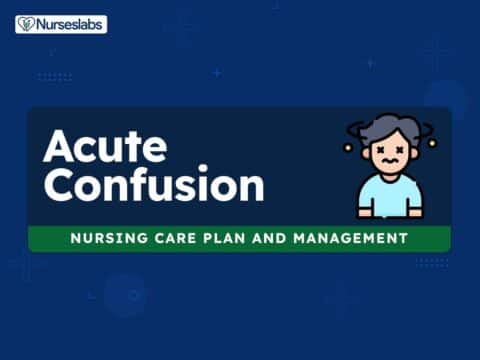
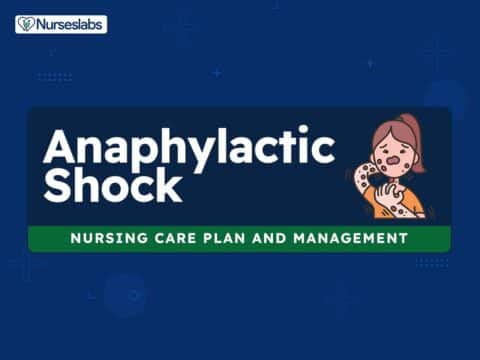

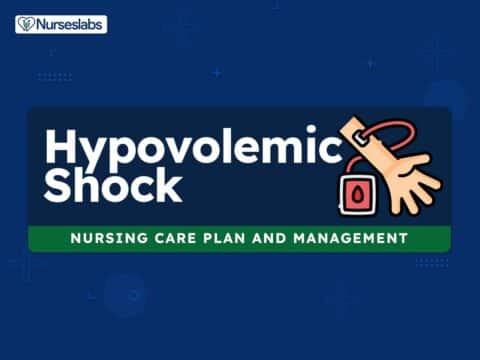



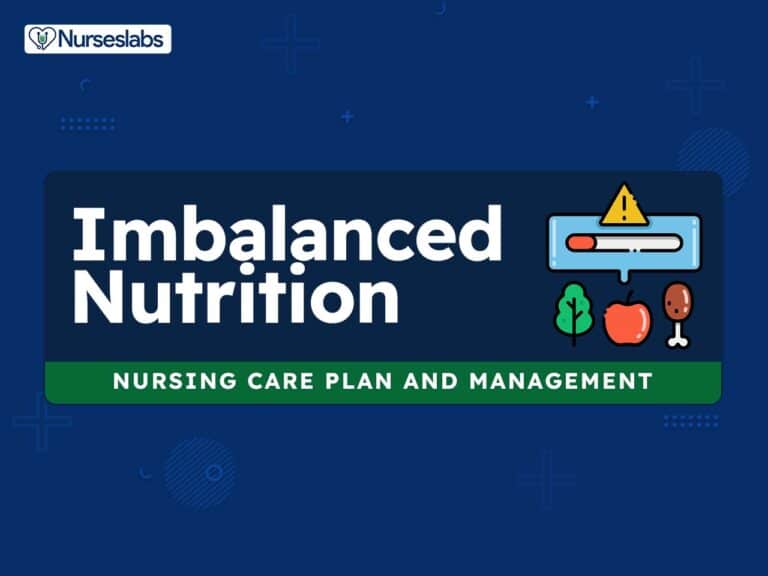
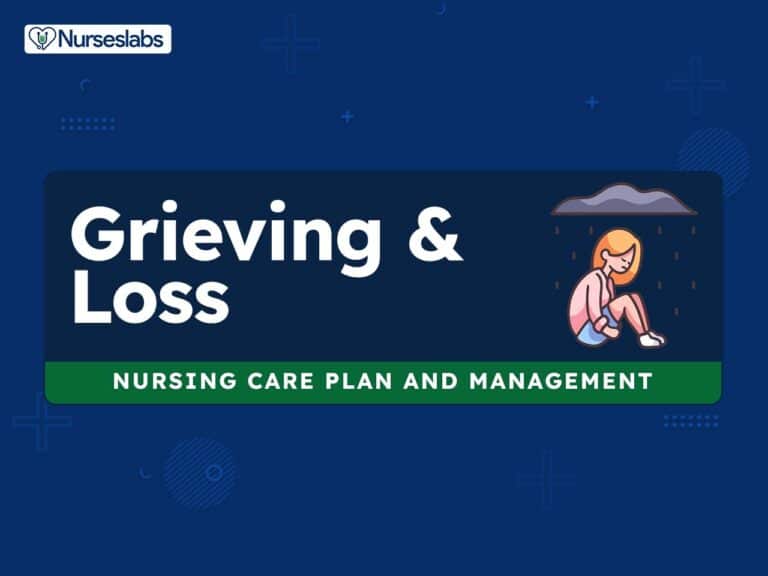


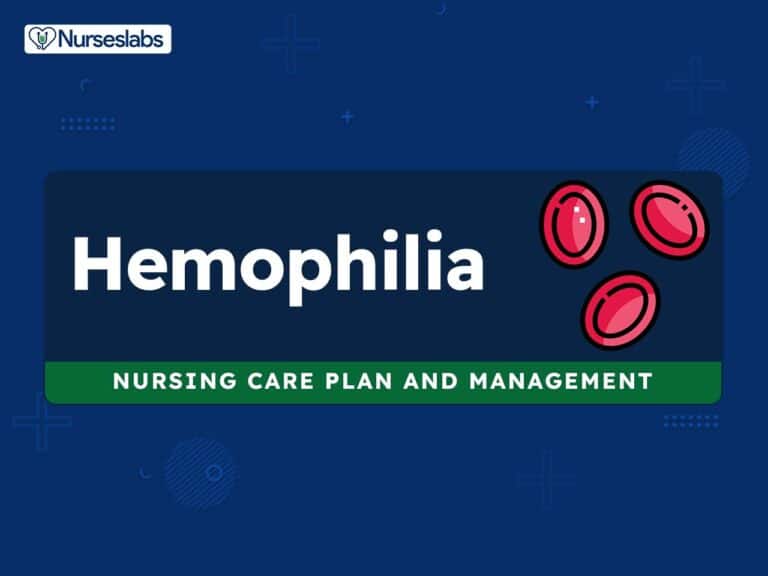

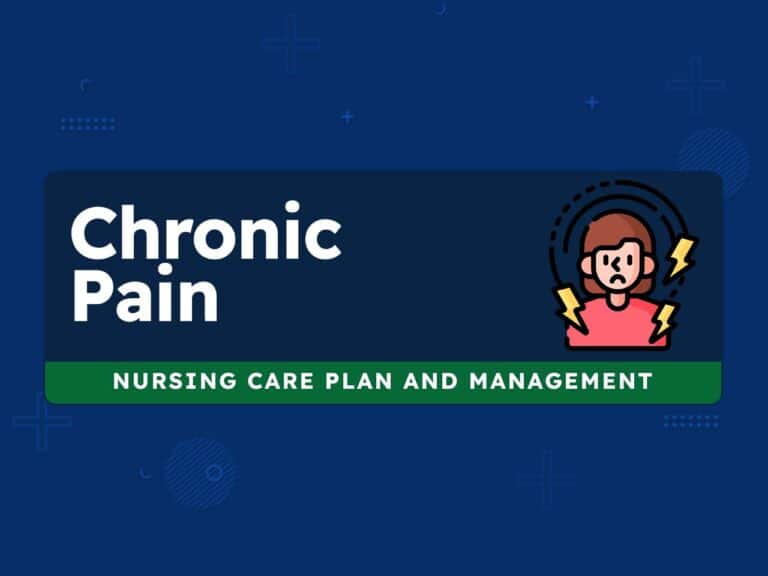
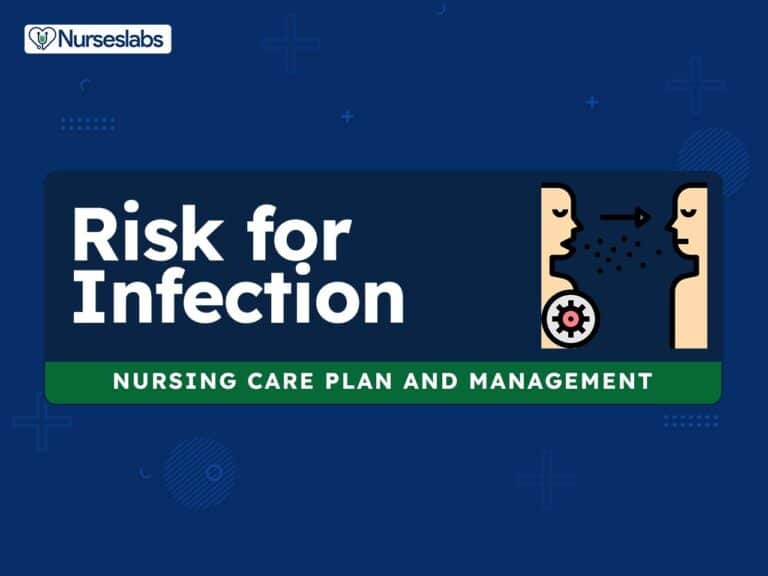
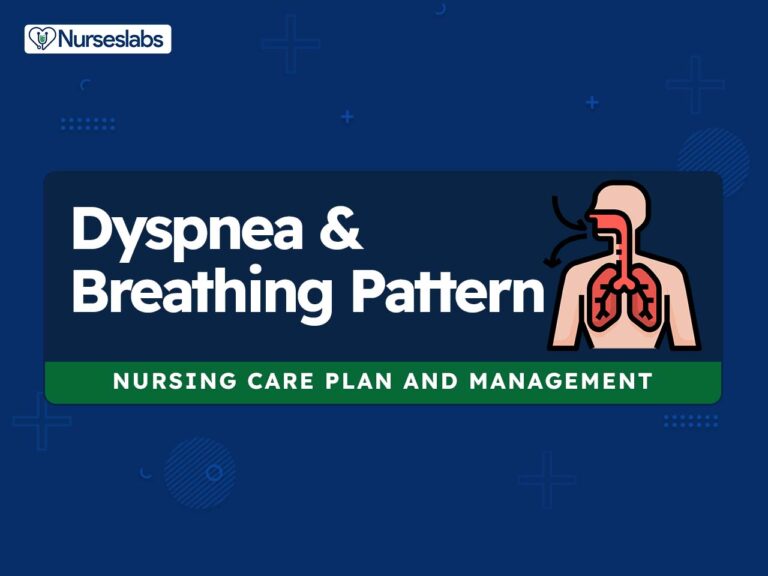
Leave a Comment